Peter Jackson The Lovely Bones Interview
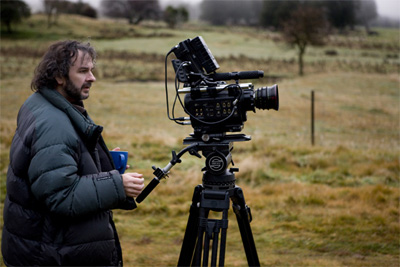
JACKSON GOES BEYOND THE NORM AND THE GRAVE
Peter Jackson, The Lovely Bones Interview by Paul FischerHe is an Oscar winner, refuses to leave his native New Zealand and went from low-budget splatter comedies to the Oscar winning director of the one of the most acclaimed film trilogies of all time. Peter Jackson has emerged as one of the world's most revered filmmakers and his latest film, The Lovely Bones, from the bestselling novel, takes him back to his Heavenly Creatures days. The film tells of a dead teenage girl caught in an in between pseudo heaven while she comes to terms with her death at the hands of the chilling Mr Harvey. Jackson talked at length about the film, answers its critics and justifies the film's lack of violence.
Warning: THERE ARE MAJOR SPOILERS AHEAD IF YOU HAVE NMOT READ THE BOOK.
Paul Fischer: What were the challenges of adapting this? What did you have to leave out?
Peter Jackson: We shot some scenes. Any film that I've done, you shoot scenes that don't end up in the final cut. In my mind, there's no such thing as a perfect adaptation of a book. The master work is the book. Alice Sebold's novel is The Lovely Bones. That is the work that has got everything in it, every character, every subplot and that's the way that you should experience the story in its most pure form. A film adaptation of any book, especially The Lovely Bones in this example, it's only ever going to be a souvenir. It's going to be an impression of aspects of the book. To me, to adapt a book is not a question of producing a carbon copy of the book. It's impossible. To include everything, the film would be five or six hours long. It's a personal impression that basically Philippa Boyens, Fran Walsh and myself, the three of us wrote the screenplay and we read the book. We responded to aspects of the book, especially emotional themes, the comforting value of the book and things it had to say about the afterlife and that aspect of it, which is very personal to anybody. That's what we responded to and our adaptation is very much just elements of the book restructured following our interests and our takes. To me, no adaptation can ever be perfect. It's impossible. You don't make a movie for the fans of the book. You just can't do that.
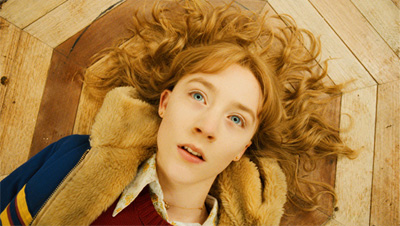 Paul Fischer: Why was the choice made to give Mr. Harvey those peculiar contact lenses?
Paul Fischer: Why was the choice made to give Mr. Harvey those peculiar contact lenses?Peter Jackson: Yeah, I think the eyes - - I've done a lot of movies with contact lenses in actors' eyes. To me, they change the color of your eye. If there's something that's going on with the character's eyes, it's because of the performance. You know, as a filmmaker, I like shooting extreme close-ups of some characters occasionally because that is a technique that you use to really get inside of somebody's head. Stanley was playing a very dangerous and frightening character, so getting close to his eyes were a way of increasing the menace because Stanley's performance was giving that to us.
Paul Fischer: What were your reasons for choosing to eliminate the rape part of her murder from the book?
Peter Jackson: Yeah, there are artistic and they are more reasons and there are practical reasons. There are a variety of reasons that I should just talk about. The film is about a teenager and her experiences of what happens. She's murdered, she goes into an afterlife experience, her in between and we wanted to make a film that teenagers could watch. We have a daughter, Fran and I have a daughter who's very similar to Susie's age. We wanted Katie to be able to see this film. There's a lot of positive aspects of this film and it's not something that I think I wanted to shield our daughter from. So it was important for us to not go into an R rated territory at all. Also, I never regarded the movie as being a film about a murder. Yet if we shot any aspect of that particular sequence in any way, then it would stigmatize the film. Movies are such a powerful medium with the music and the effects and acting and performance, the editing and the lighting and camerawork that to show a 14-year-old girl being murdered in any way, even regards no matter how briefly, it would completely swing the balance of the movie and it would frankly make it a film that I wouldn't want to watch. I mean, I would have no interest in seeing that depicted on film and I would not want to see the film.
Every movie that I make is a film that I want to see. It's very important. I make movies that I know I would enjoy seeing in the cinema and that would not be one of them. So the movie that we did make, we wanted it to become something that was the - - it was almost like a mystery, a crime mystery of what happens when you're in this world of the subconscious, the world of the afterlife and Susie has to deal with the mystery of what happened to her. There's a positive aspect to it in the sense that she's immortal and saying there is no such thing as death. All of those aspects and themes were what interested us. Not the murder, and also I just could not, I have no interest and I've shot some pretty extreme things in my time with Bad Taste and Meet the Feebles and Brain Dead. There's a certain style and a sense of humor that I believe you can do to get away with that but to do anything that depicted violence towards especially a young person in a way that was serious, to me I would have no interest in filming it at all. It would be repulsive.
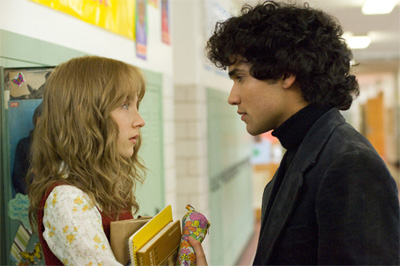
So there was a variety of reasons but we felt very determined from the beginning that the film should be PG-13 because it was important. I mean, how much murder and killing do you need to see to be satisfied? How much to make somebody happy? I mean, one of the things we did which was different from the novel but now the way we restructured the screenplay is we have her fleeing from her murder, and we really liked that aspect of sort of the way that bit of the story was told in the sense that at the point that her spirit becomes disconnected from her body and she's running. She's running across that field, she's running into the street, she's running home, and Susie doesn't know what's happening to her. She's literally confused and now she finds herself in the in-between, which is essentially the world of dream, of subconscious, of this confused state, and she has to start to put the pieces together like a mystery. So that really dictated very strongly that even for all of the other reasons, seeing any form of murder was not something that we wanted to do because of the way that we restructured the story. She herself is confused and has to put the pieces of the puzzle together as the story continues.
Paul Fischer: Peter, what drew you to The Lovely Bones in the first place? It is an intimate character study after doing four big effects-driven stories.
Peter Jackson: It's not a challenge to direct a different style of film in terms of the acting because you're always dealing with a screenplay and a screenplay has particular needs and a style that is appropriate and it's my job obviously to attempt to shoot the script that's appropriate for that particular role. But to answer your question, the only thing as a filmmaker that I am scared of or fear is repetition. I have no interest in doing the same thing over and over again, and that's not to say that I wouldn't do another fantasy film or I wouldn't do another splatter film one day or another film with puppets. But it would be different, and certainly it's great to have a break and it's great to turn your mind to something different, and The Lovely Bones was a challenge.
One of the things like I'm sure most of the people in this room would appreciate that things are immediately much more interesting and enjoyable if they're difficult. If you're attempting to do something or if you decide that you're going to take on a project for the next year or two years, if it's easy and familiar - I shouldn't say easy, actually, that's the wrong word. But if it's familiar and if it's treading on the same ground that you've gone before, immediately it's going to be less interesting than taking on something that has new demands and a fresh challenge. The Lovely Bones is a wonderful puzzle, it's a terrific book that affects you emotionally, but the book doesn't have a structure that immediately makes a film obvious in your mind. The book affects you on an emotional level, not a story level as such, and you delve into it and as a filmmaker you figure out a way in which you can tell the story on film as I said at the very beginning, not necessarily the perfect way, and not the way that other people would do it. You take 20 different filmmakers and give them a book like this - any book, really, but especially Lovely Bones - and you'll have 20 completely different films, which is interesting. So the idea of certainly doing something that was a challenging new topic was absolutely of great interest to us.
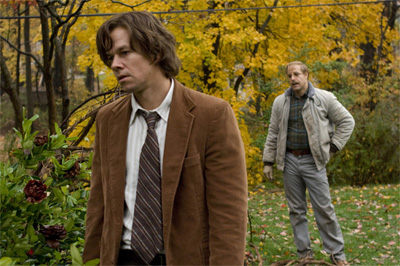 Paul Fischer: Did all of you agree with how justice was carried out in the film, or about the ending?
Paul Fischer: Did all of you agree with how justice was carried out in the film, or about the ending?Peter Jackson: Well, what I like about the ending, are you talking about Mr. Harvey and what happens to him?
Paul Fischer: Her decision between the boy and what's in the box.
Peter Jackson: Well that was one of the things really that we loved about the climax, the fact that she has this moment through the use of Ruth, who is a girl with genuine psychic ability, Susie finds that she has a few seconds back on earth again, a few seconds where she's inhabiting a body rather than being this sort of free spirit, and in those few seconds she could decide to say, "call the police! That guy out the window is the man who murdered me. You'll find my body inside that safe. Quickly, get to a phone and call the cops." But she doesn't do that. She has that choice, but in those few seconds, she decides to have the kiss that she wanted to have and she makes that her choice. We just thought that was a beautiful way to end the story, and in terms of the very end, what I like about what happens to Mr. Harvey is that it confirms a hope that we all have that even if the police or the legal authorities don't ultimately do their work, that there's a form of natural justice that happens. That was very much the concept behind what happens to Mr. Harvey, that there's an icicle that falls, that's just enough to throw him off balance, which is just enough to have him slip and fall down to his death, and that's a form of natural justice. It's not a person doing it; we don't think it's a person. Did the icicle fall or was it pushed? Who knows. It's one of the interesting questions. But nonetheless it confirmed something that I think everybody hopes which is that there is such a thing in the world as natural justice that also prevails.
Paul Fischer: Susie's limbo world - talk about the challenge of coming up with the right look and tone?
Peter Jackson: Sure. Susie's world of the in-between. Well, the key thing to us was just the concept that it wasn't a physical place. We weren't saying that when you die you're going to go into this afterlife and in this movie we're going to show you what that afterlife is like; that's not what we attempted to do. We wanted to base it on Susie's subconscious and so at the point that she is no longer anchored to earth through her body, she is basically permanently her mind is in the world of dreams, like you know, at night she dreams as we all do, but now that she no longer has a living body, she's permanently in this world of the self conscious, which is essentially a dream world. So a lot of the imagery that we used and a lot of the metaphor - everything is a metaphor in a dream world; everything means something else.
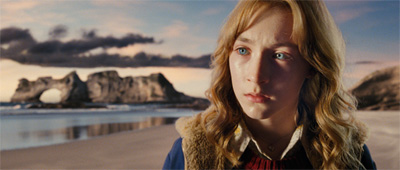 But it's not a literal thing, so we used image systems that the audiences is not really supposed to obviously understand all of this, but as script writers we put it into our screenplay and the overall impression that it creates is hopefully gives the audience the idea of what is happening. So we have that people say when you dream about a house, that a house really represents a person, when you sort of analyze dreams, and so Mr. Harvey's, the house that she imagines, that she sees in that empty field with the lighthouse sticking out of it, that house represents Mr. Harvey, so she's using the metaphor of the house to represent the killer. As we said earlier, she flees from her own murder so she doesn't know where her body is and the only person that does is Mr. Harvey, and Mr. Harvey himself keeps a souvenir of a charm bracelet. He throws most of the charm bracelet away because of the evidence, but he rips off one charm, which happens to be the house, and that house happens to be Susie, using the same image system. So he's now keeping control of Susie; it's her fear of Mr. Harvey that he still has over her that prevents her from leaving this world of the in-between. I mean, she's trying to get to heaven but she's stuck, so the concept of her finding out the answers to these questions where her body is, she has to confront the man who killed her, and she does that symbolically by going through the door of that house and in doing so she enters his subconscious.
But it's not a literal thing, so we used image systems that the audiences is not really supposed to obviously understand all of this, but as script writers we put it into our screenplay and the overall impression that it creates is hopefully gives the audience the idea of what is happening. So we have that people say when you dream about a house, that a house really represents a person, when you sort of analyze dreams, and so Mr. Harvey's, the house that she imagines, that she sees in that empty field with the lighthouse sticking out of it, that house represents Mr. Harvey, so she's using the metaphor of the house to represent the killer. As we said earlier, she flees from her own murder so she doesn't know where her body is and the only person that does is Mr. Harvey, and Mr. Harvey himself keeps a souvenir of a charm bracelet. He throws most of the charm bracelet away because of the evidence, but he rips off one charm, which happens to be the house, and that house happens to be Susie, using the same image system. So he's now keeping control of Susie; it's her fear of Mr. Harvey that he still has over her that prevents her from leaving this world of the in-between. I mean, she's trying to get to heaven but she's stuck, so the concept of her finding out the answers to these questions where her body is, she has to confront the man who killed her, and she does that symbolically by going through the door of that house and in doing so she enters his subconscious. So I love the idea that she goes in there, she sees his previous victims, which is images that only he has in his mind, so now her subconscious is entering Harvey's subconscious. We used things like the flower, the blooming flower; that flower is really Susie and her life force, so it's withered and it's dead as far as her father sees this flower, but it blooms in his hand when she's trying to communicate with him and say "I'm here dad," and he imagines that flower blooming. Then, when she opens the safe, which is ultimately we reveal later that's where her body is, but when Susie first opens the safe, what does she see there but the flower, the bloom of the flower which is again supposed to be her. And it's the first clue as to where she is. The Gazebo was representing unfulfilled love because that first date she was going to have with Ray, he said "meet me in the shopping mall by the gazebo." So that gazebo represents the date she never had and she sees him off in the distance in the in-between and she tries to run there and she can't run because the ground turns to water and mush, which is a very common dream image that we all have. We're trying to get to a place and the ground is turning to syrup or glue and we can't make it there, so everything that we did in that in-between world, and again this is all working on the basis of subconscious and not supposed to be particularly clear, but it was designed as a way of working within the metaphor and image system of dream because we thought and we liked the idea that in those sequences we were inside Susie's subconscious and it wasn't a physical place that we were showing.
Paul Fischer: Talk about working with composer Brian Eno and what he brought to the film?
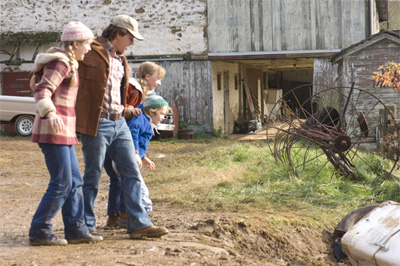 Peter Jackson: Brian Eno was a wonderful surprise for us, a delightful surprise that happened. Interestingly enough, we had made a decision earlier on that we would possibly have no soundtrack composer on the movie, that we thought it would be interesting to do what Martin Scorsese does, very much inspired by him, and have a soundtrack that was composed of songs of that period and choose songs especially that would be suitable for particular sequences in the film. And when we were compiling a list of songs as we were writing the script, we would write them into the screenplay, so we would actually identify the names of songs in the script that we thought would be appropriate.
Peter Jackson: Brian Eno was a wonderful surprise for us, a delightful surprise that happened. Interestingly enough, we had made a decision earlier on that we would possibly have no soundtrack composer on the movie, that we thought it would be interesting to do what Martin Scorsese does, very much inspired by him, and have a soundtrack that was composed of songs of that period and choose songs especially that would be suitable for particular sequences in the film. And when we were compiling a list of songs as we were writing the script, we would write them into the screenplay, so we would actually identify the names of songs in the script that we thought would be appropriate. It was two or three of Brian Eno's existing tracks that made it onto our list - "Baby's On Fire" was one that we always thought would be great to accompany the scene where Mark goes into the cornfield with the baseball bat, there was an instrumental that he did called "The Big Ship" which was another beautiful piece of music that we had planned on using, in addition to a lot of other pieces by other composers. And so we got to the point pretty much at the beginning of postproduction where we had to start to ask permission to use these tracks, and we contacted Brian and explained what we were doing and could we use these couple of songs of his, and he asked us about the film. He rushed out and grabbed the book to read it - he was curious - and he said to us, "have you got a composer to do the soundtrack?" We said well, no, not really. We didn't think - we maybe might not use one. And he said he would be really interested in doing it if we wanted to go that way - he sort of volunteered - which was amazing because we never even thought to ask him. Because he's done a couple of movies, but it's not something that he really devotes much of his time to, and he's very busy doing all sorts of amazing projects.
So Brian was great to work with and [it was] an incredibly different experience because we're used to working with composers who take a final edit of the movie and they compose music to exactly the cut of the film you give them, to the final actual seconds and frames. It's all perfectly lined up, and Brian didn't want to see the rough cut of the film, he didn't want to read the script. He wanted to see conceptual art, he wanted to see imagery, he wanted to be inspired by emotion, he wanted to see photographs of the set, and then he started to compose and send us - and we were just communicating with him over iChat. We were in New Zealand and he was in the U.K. and he would send us these long pieces of music, beautiful instrumental emotional sort of pieces which might be seven or eight minutes long and would have all sorts of interesting shapes to them. He just basically said that we should edit these pieces of music as we saw fit and combine them and blend them, and that's how he worked. It was a completely different way to how we've ever worked with a composer before, but for this particular movie, both the sound and the style of working really ended up suiting the film great.
Paul Fischer: What did you discover about people's need to believe in an afterlife?
Peter Jackson: Well, it's an interesting question and it's one that I think everyone has obviously there own points of view about it. I'm not sure if I'm answering your question correctly but certainly what we felt very strongly with the movie is that we didn't want to make a film that cast judgment on people's religious beliefs because that wasn't at all the motivation for making the movie. We didn't create the in between being Susie's subconscious for that reason. To us it wasn't about at all her existing in a world that had some form of religious control around it. It was literally she is disconnected from her body for that period and she is in this weird hallucinogenic state. What we do in the movie is, obviously if you've seen it you realize there's that scene in the end with the field when Harvey's victims come down to meet Susie. There's a golden light there which is supposed to be wide heaven, as Susie calls it and as Alice Sebold called it. That's a golden light which I shot in a deliberately clichéd recognizable way that people get the idea that heaven is there. That is indeed the goal of which Susie has is to get out of this weird trapped place that she is and to actually move on. That golden light represents where she and everyone else moves on to. The idea is that you can put whatever you choose into that golden light and if you are religious, then obviously that's what you put in there. If you're not religious, you can imagine something else. If you don't believe there's anything there at all then probably it's not the movie you should go see.
I personally think that, all religious things to one side which is a completely different topic, I do think that there is some energy that we have inside us. I have experienced a couple of people that have been very close to me dying and I've been there, and I've held their hand. There is a feeling that when somebody passes on, that they leave. There's a sense of departure that's very, very strong and it's so strong that it has made me believe in the fact that there is a form of energy inside us that continues to survive after death. Science, physics tells us that energy cannot be destroyed so it has to go somewhere. It doesn't evaporate.
Paul Fischer: How much fun are you having with the second Hobbit script, making it up?
Peter Jackson: The second Hobbit script is still based on the Hobbit novel. The Hobbit novel is in two parts.
Paul Fischer: Have you found a middle point?
Peter Jackson: Yeah, yeah, we have but you'll have to wait and see the film to find out.
Paul Fischer: Do you have a next project to direct?
Peter Jackson: I've got a couple of projects I'm developing.
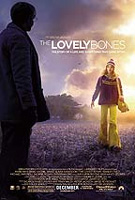
The Lovely Bones
Starring: Mark Wahlberg, Rachel Weisz, Susan Sarandon, Saoirse Ronan, Stanley Tucci, Michael ImperioliDirector: Peter Jackson
Genre: Dramas
Oscar winner Peter Jackson directs this adaptation of Alice Sebold's beloved novel THE LOVELY BONES. After she is killed, young Susie Salmon (Saoirse Ronan, ATONEMENT) looks down from heaven on both her parents (played by Mark Wahlberg and Rachel Weisz) and her murderer.
MORE
- Mission: Impossible Fallout
- Glenn Close The Wife
- Allison Chhorn Stanley's Mouth Interview
- Benicio Del Toro Sicario: Day of the Soldado
- Dame Judi Dench Tea With The Dames
- Sandra Bullock Ocean's 8
- Chris Pratt Jurassic World: Fallen Kingdom
- Claudia Sangiorgi Dalimore and Michelle Grace...
- Rachel McAdams Disobedience Interview
- Sebastián Lelio and Alessandro Nivola...
- Perri Cummings Trench Interview



